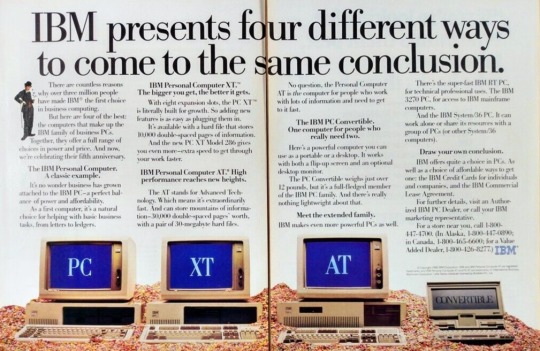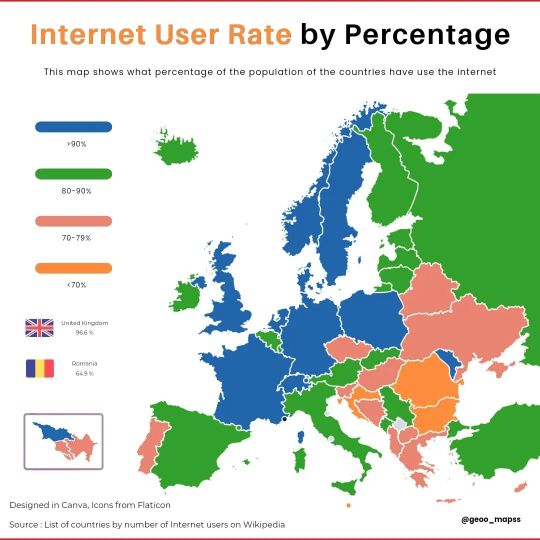#mobile data rates
Text
Transform Your Business With These Profitable And Proven Digital Marketing Ideas
Boost your business success with top digital marketing strategies like SEO optimization and social media engagement. Leverage email marketing and content creation to propel profits and brand awareness.
In today’s digital age, having a robust online presence is vital for business growth. Entrepreneurs and marketers alike must embrace dynamic digital marketing tactics to stay ahead. This involves understanding the nuances of search engine optimization (SEO) to enhance visibility, engaging with customers on various social media platforms to build relationships, utilizing targeted email marketing campaigns to retain customers, and consistently producing quality content to establish authority.

>> My Best Recommended & Proven Way to Make $100 Daily — Watch THIS Video FREE Training to START >>
Embracing The Digital Marketing Revolution
Embracing the Digital Marketing Revolution has become essential for businesses seeking growth and profitability. Today, the digital arena offers a plethora of strategies to reach targeted audiences effectively. Let’s dive into the shift from traditional methods to digital and understand the critical factors for success in this new marketing landscape.
From Traditional To Digital: The Paradigm Shift
The marketing world has undergone a dramatic transformation in recent years. Digital platforms now offer unprecedented opportunities for businesses to connect with consumers. With the power of data analytics and targeted advertising, companies can craft personalized messages and measure their campaign success with precision.
Accessibility: Digital channels are accessible to businesses of all sizes.
Engagement: Real-time interaction with consumers has become a reality.
Analytics: Data-driven insights inform more strategic decisions.
Critical Success Factors In Today’s Digital Landscape
To stand out within the digital marketing revolution, businesses must acknowledge and leverage several key factors.
Success Factor Description User Experience Sites must be fast, mobile-friendly, and easy to navigate.Content QualityContent should be engaging, informative, and tailored to the audience.SEO Practices Employing SEO techniques boosts visibility in search engine rankings. Social Media Presence Active and strategic use of social channels expands audience reach. Adaptability Staying agile allows businesses to pivot strategies as trends evolve.
Leverage The Power Of Social Media
Embrace the dynamic world of social media to skyrocket your business reach. Harnessing social platforms can spell the difference between average growth and extraordinary expansion.
Strategies For Building A Strong Social Presence
Initiate your digital saga with a robust social presence.
Identify the Best Platforms: Choose platforms that align with your brand.
Create Engaging Content: Regularly post content that resonates with your audience.
Interact with Your Community: Respond to comments and messages promptly.
Use Analytics: Track what works and refine your strategy.
Converting Followers Into Customers
Turn your followers into a loyal customer base with these steps:
Offer Exclusive Deals: Provide social media-only discounts to followers.
Showcase Customer Testimonials: Share success stories to build trust.
Enable Easy Purchases: Use social platforms with integrated shopping features.
Run Targeted Ads: Reach potential customers through tailored advertising.
Content Marketing: The Core Of Digital Strategy
Transform your business with the power of content marketing. Attract and engage your audience consistently. Content is not just king; it’s the entire kingdom in today’s digital marketing realm. A strategy centered on creating and sharing valuable, relevant, and consistent content can drive profitable customer action.
Crafting Content That Resonates And Converts
Creating content that connects with your audience is crucial. It must resonate and lead to conversions. Follow these tips:
Understand your audience’s needs.
Create clear, compelling messages.
Use stories to build connections.
Include calls-to-action that stand out.
Develop diverse content forms. These include:
Type Description Blog Posts Detailed articles on relevant topics. Videos Engaging and easy to consume. Infographics Quick facts and figures. E-books Comprehensive guides.
Measuring The Impact Of Your Content
It’s not enough to create content; measure its impact. Key performance indicators (KPIs) help understand content effectiveness. Regularly check these:
Traffic: Number of visitors to your content.
Engagement: Time spent and interaction levels.
Leads: Sign-ups or inquiries generated.
Sales: Direct revenue from content-related campaigns.

Credit: www.amazon.com
>> My Best Recommended & Proven Way to Make $100 Daily — Watch THIS Video FREE Training to START >>
Seo: Unlocking Organic Growth
Smart businesses know that Search Engine Optimization (SEO) is a critical part of their online success. SEO drives free traffic to your website and boosts visibility. Understanding and implementing top-notch SEO strategies can transform your business and lead to remarkable growth.
Keyword Research For Maximum Visibility
The right keywords act like beacons that guide users to your content. Effective keyword research puts your business in the spotlight. It’s about understanding what your audience searches for and optimizing your content to meet those queries.
Use tools like Google Keyword Planner or SEMrush to discover popular search terms.
Analyze the competition to find gaps in the market.
Focus on long-tail keywords to target specific audiences and intents.
Staying Ahead Of The Algorithm Changes
Search engines often change their algorithms, keeping businesses on their toes. To stay ahead:
Keep content fresh and high-quality. Google loves new, relevant content.
Follow SEO news and updates through blogs or online communities.
Ensure your site is mobile-friendly, as mobile-first indexing is a key ranking factor.
Staying informed and adaptable to changes can secure your rank on search engine results pages.
E-mail Marketing: A Direct Line To Customers
Imagine reaching out to your customers with a personalized touch that feels like a one-on-one conversation. E-mail marketing offers this direct line of communication. It allows businesses to convey their message in a way no other digital marketing channel can. The personal inbox is a private space, and with the right strategy, your business can shine here.
Creating Compelling Newsletters
Newsletters breathe life into e-mail marketing. They keep your audience engaged and informed. A well-crafted newsletter can turn readers into customers, and customers into brand advocates.
Start with a catchy subject line. This is your first impression.
Design matters. Use clean, responsive templates that adapt to various devices.
Highlight key content with bold call-to-actions.
Keep your message clear and to the point. Short sentences work best.
Use bullet points to break down information.
Integrate visuals. Images and graphics can tell a story more effectively than text alone.
Segmentation And Personalization Techniques
Not all customers are the same. Segmentation divides your audience into groups with similar characteristics. Personalization speaks to each group differently.
To segment effectively, consider demographics, behavior, and purchase history.
Personalization can skyrocket open rates and conversions. Address recipients by name. Tailor content to their interests and past interactions with your brand.
Segmentation Criteria Personalization Tactics Location Localized offers Purchase history Recommended products User behavior Abandoned cart reminders
Automated tools can help tailor e-mails based on these criteria.
Remember, the goal is a click, and eventually, a conversion. Your e-mail marketing should create a smooth path towards this.
>> My Best Recommended & Proven Way to Make $100 Daily — Watch THIS Video FREE Training to START >>
Data Analytics: Making Informed Decisions
In the digital marketing landscape, data analytics is the compass that guides businesses towards success. By understanding and utilizing data analytics, companies can make strategic decisions that lead to increased profits and optimized marketing efforts.
Interpreting Data To Refine Marketing Efforts
Interpreting data is key to refining your marketing strategies. By looking at the numbers, you can identify what works and what doesn’t. This leads to more targeted campaigns and better allocation of resources. Consider these points for effective data interpretation:
User behavior indicates preferences and pain points.
Conversion rates show the effectiveness of your call-to-actions.
Traffic sources reveal the most fruitful marketing channels.
Tools For Tracking Success And Roi
Many tools exist to track success and calculate ROI. Choosing the right ones can streamline your analysis and improve your marketing ROI. Here’s a list of top tools:
Tool Use Case Google Analytics Website traffic and user behavior analysis Social Media Analytics Social engagement and campaign performance Email Marketing Software Email campaign tracking and subscriber activity
Choose tools that align with your marketing goals. This ensures you’re not only gathering data but also applying it effectively.
Future-proof Your Business With Emerging Technologies
As technologies evolve, businesses must adapt to stay ahead. Emerging technologies provide innovative ways to connect with customers and streamline operations. To remain competitive in a digital world, embracing these advancements is critical. Let’s explore how some of these technologies can future-proof your business and lead to exponential growth.
Incorporating Ai For Personalized Experiences
Artificial Intelligence (AI) takes your marketing to new heights. AI analyzes data quickly and accurately. This enables custom-tailored content for your audience. Using AI, businesses deliver personalized recommendations, enhance customer service, and increase engagement. AI tools like chatbots provide 24/7 interaction, ensuring users receive instant assistance. AI-driven insights help in creating marketing strategies that resonate well with your target market.
The Role Of Ar And Vr In Modern Marketing
Augmented Reality (AR) and Virtual Reality (VR) are reshaping customer experiences. These technologies offer interactive ways for consumers to engage with your brand. AR adds digital elements to a live view, often by using the camera on a smartphone. Examples include virtual try-ons and interactive ads. VR creates a fully immersive experience, transporting users to different worlds. It’s used in virtual tours and product demonstrations. By integrating AR and VR, businesses offer unique experiences that captivate and convert customers.
Personalized Shopping: Customers try on clothes virtually using AR mirrors.
Immersive Product Demos: VR allows customers to test products in a virtual environment.
Interactive Ad Campaigns: AR campaigns encourage user engagement and sharing.
Frequently Asked Questions
Q. What Are Top Digital Marketing Strategies?
Digital marketing strategies that yield profitability include content marketing, SEO optimization, social media engagement, email campaigns, and PPC advertising.
Q. How Does Digital Marketing Boost Business?
Effective digital marketing enhances brand visibility, generates leads, improves customer engagement, and increases conversions, thereby boosting business profitability.
Q. Which Digital Channels Offer The Best Roi?
Email marketing often boasts the highest ROI, followed closely by SEO, content marketing, and social media when executed with a strategic approach.
Q. Can Digital Marketing Reduce Business Costs?
Yes, digital marketing can significantly reduce costs by targeting specific audiences and measuring campaigns for continual optimization and reduced ad spend waste.
Q. Why Is Social Media Vital For Marketing?
Social media platforms offer vast outreach potential, direct customer engagement, and valuable insights into consumer behavior, making them essential in digital marketing strategies.
Conclusion
Embracing digital marketing isn’t just an option; it’s a necessity for profitability and growth. Implement the strategies we’ve covered, from leveraging social media to harnessing SEO, and watch your business thrive in the digital arena. Remember, consistent effort and adaptability are key.
Start now and transform your brand’s future.
>> My Best Recommended & Proven Way to Make $100 Daily — Watch THIS Video FREE Training to START >>
Thanks for reading my article on Transform Your Business With These Profitable And Proven Digital Marketing Ideas, hope it will help!
Affiliate Disclaimer :
This article Contain may be affiliate links, which means I receive a small commission at NO ADDITIONAL cost to you if you decide to purchase something. While we receive affiliate compensation for reviews / promotions on this article, we always offer honest opinions, users experiences and real views related to the product or service itself. Our goal is to help readers make the best purchasing decisions, however, the testimonies and opinions expressed are ours only. As always you should do your own thoughts to verify any claims, results and stats before making any kind of purchase. Clicking links or purchasing products recommended in this article may generate income for this product from affiliate commissions and you should assume we are compensated for any purchases you make. We review products and services you might find interesting. If you purchase them, we might get a share of the commission from the sale from our partners. This does not drive our decision as to whether or not a product is featured or recommended.
Source : Boost Your Website Traffic With Instagram’s Best-Kept Secret Method
#Profitable digital marketing#Business transformation strategies#Effective online marketing tactics#Revenue boosting digital strategies#Successful digital branding techniques#Maximizing ROI in digital marketing#Growth hacking for businesses#Targeted audience engagement methods#Conversion rate optimization tips#Social media advertising insights#Email marketing best practices#SEO for increased profitability#Content marketing strategies#Pay-per-click advertising techniques#Data-driven marketing approaches#Customer retention strategies#Lead generation tactics#Video marketing for business growth#Influencer marketing insights#Mobile marketing strategies#Website optimization for conversions#Analytics-driven marketing decisions#E-commerce marketing strategies#Marketing automation tips#Digital marketing trends and innovations#Affiliate Earnings#Affiliate Marketing#Affiliate Marketing Guide#Affiliate Marketing Mastery#Affiliate Marketing Training
0 notes
Text

In the fast-paced world of digital marketing, businesses are constantly seeking innovative ways to reach their target audience and drive growth. E-commerce has emerged as a powerful tool that not only expands the reach of businesses but also enhances customer experience. In this comprehensive guide, we will explore the dynamic realm of e-commerce and how it can elevate your business in the digital marketing landscape.
Do Read: https://ennobletechnologies.com/e-commerce/e-commerce-solutions/
#Conversion Rate Optimization#Cross-Platform Shopping#Customer Retention Strategies#Digital Payment Solutions#Digital Storefronts#E-Commerce Analytics#E-Commerce Branding#E-commerce content marketing#E-Commerce Data Analysis#E-Commerce Marketing#E-Commerce Optimization#E-Commerce Platforms#E-Commerce Sales Funnels#e-commerce SEO services#E-Commerce Solutions in Digital Marketing#E-Commerce Website Development#Mobile Shopping Apps#Online Retail Strategies#Payment Gateway Integration#SEO for E-Commerce#Shopping Cart Integration#Social Commerce
1 note
·
View note
Text
Visiting back home for the next 2 weeks! Canadian cell providers are such a fuckin joke that it's literally cheaper for us to get brand new sim cards and pay for a whole month (or even 3 months) than use international coverage lol
#meanwhile when I first moved to Canada I could continue using my old provider basically indefinitely lol#ju#the rate is like $13/day#we just got boost mobile cards with 5GB of data for $20 (roughly adjusting for CAD)
0 notes
Text
Welcome to the world of digital marketing, where conversion rates and SEO are not just buzzwords but crucial elements that can make or break your online presence. Imagine a perfect symbiosis between these two powerful strategies – a harmony that boosts both your conversion rates and search engine optimization simultaneously. In this blog post, we will unveil three techniques that will revolutionize the way you approach your online marketing efforts. So buckle up as we delve into the art of enhance your conversion rates and SEO hand in hand, unlocking unlimited potential for your business! Visit us: https://www.gmatechnology.com/
#Relationship Between SEO And Conversion Rates#Content Strategy Optimization#Mobile Optimization#Structured Data Markup
0 notes
Text
Your car spies on you and rats you out to insurance companies

I'm on tour with my new, nationally bestselling novel The Bezzle! Catch me TOMORROW (Mar 13) in SAN FRANCISCO with ROBIN SLOAN, then Toronto, NYC, Anaheim, and more!

Another characteristically brilliant Kashmir Hill story for The New York Times reveals another characteristically terrible fact about modern life: your car secretly records fine-grained telemetry about your driving and sells it to data-brokers, who sell it to insurers, who use it as a pretext to gouge you on premiums:
https://www.nytimes.com/2024/03/11/technology/carmakers-driver-tracking-insurance.html
Almost every car manufacturer does this: Hyundai, Nissan, Ford, Chrysler, etc etc:
https://www.repairerdrivennews.com/2020/09/09/ford-state-farm-ford-metromile-honda-verisk-among-insurer-oem-telematics-connections/
This is true whether you own or lease the car, and it's separate from the "black box" your insurer might have offered to you in exchange for a discount on your premiums. In other words, even if you say no to the insurer's carrot – a surveillance-based discount – they've got a stick in reserve: buying your nonconsensually harvested data on the open market.
I've always hated that saying, "If you're not paying for the product, you're the product," the reason being that it posits decent treatment as a customer reward program, like the little ramekin warm nuts first class passengers get before takeoff. Companies don't treat you well when you pay them. Companies treat you well when they fear the consequences of treating you badly.
Take Apple. The company offers Ios users a one-tap opt-out from commercial surveillance, and more than 96% of users opted out. Presumably, the other 4% were either confused or on Facebook's payroll. Apple – and its army of cultists – insist that this proves that our world's woes can be traced to cheapskate "consumers" who expected to get something for nothing by using advertising-supported products.
But here's the kicker: right after Apple blocked all its rivals from spying on its customers, it began secretly spying on those customers! Apple has a rival surveillance ad network, and even if you opt out of commercial surveillance on your Iphone, Apple still secretly spies on you and uses the data to target you for ads:
https://pluralistic.net/2022/11/14/luxury-surveillance/#liar-liar
Even if you're paying for the product, you're still the product – provided the company can get away with treating you as the product. Apple can absolutely get away with treating you as the product, because it lacks the historical constraints that prevented Apple – and other companies – from treating you as the product.
As I described in my McLuhan lecture on enshittification, tech firms can be constrained by four forces:
I. Competition
II. Regulation
III. Self-help
IV. Labor
https://pluralistic.net/2024/01/30/go-nuts-meine-kerle/#ich-bin-ein-bratapfel
When companies have real competitors – when a sector is composed of dozens or hundreds of roughly evenly matched firms – they have to worry that a maltreated customer might move to a rival. 40 years of antitrust neglect means that corporations were able to buy their way to dominance with predatory mergers and pricing, producing today's inbred, Habsburg capitalism. Apple and Google are a mobile duopoly, Google is a search monopoly, etc. It's not just tech! Every sector looks like this:
https://www.openmarketsinstitute.org/learn/monopoly-by-the-numbers
Eliminating competition doesn't just deprive customers of alternatives, it also empowers corporations. Liberated from "wasteful competition," companies in concentrated industries can extract massive profits. Think of how both Apple and Google have "competitively" arrived at the same 30% app tax on app sales and transactions, a rate that's more than 1,000% higher than the transaction fees extracted by the (bloated, price-gouging) credit-card sector:
https://pluralistic.net/2023/06/07/curatorial-vig/#app-tax
But cartels' power goes beyond the size of their warchest. The real source of a cartel's power is the ease with which a small number of companies can arrive at – and stick to – a common lobbying position. That's where "regulatory capture" comes in: the mobile duopoly has an easier time of capturing its regulators because two companies have an easy time agreeing on how to spend their app-tax billions:
https://pluralistic.net/2022/06/05/regulatory-capture/
Apple – and Google, and Facebook, and your car company – can violate your privacy because they aren't constrained regulation, just as Uber can violate its drivers' labor rights and Amazon can violate your consumer rights. The tech cartels have captured their regulators and convinced them that the law doesn't apply if it's being broken via an app:
https://pluralistic.net/2023/04/18/cursed-are-the-sausagemakers/#how-the-parties-get-to-yes
In other words, Apple can spy on you because it's allowed to spy on you. America's last consumer privacy law was passed in 1988, and it bans video-store clerks from leaking your VHS rental history. Congress has taken no action on consumer privacy since the Reagan years:
https://www.eff.org/tags/video-privacy-protection-act
But tech has some special enshittification-resistant characteristics. The most important of these is interoperability: the fact that computers are universal digital machines that can run any program. HP can design a printer that rejects third-party ink and charge $10,000/gallon for its own colored water, but someone else can write a program that lets you jailbreak your printer so that it accepts any ink cartridge:
https://www.eff.org/deeplinks/2020/11/ink-stained-wretches-battle-soul-digital-freedom-taking-place-inside-your-printer
Tech companies that contemplated enshittifying their products always had to watch over their shoulders for a rival that might offer a disenshittification tool and use that as a wedge between the company and its customers. If you make your website's ads 20% more obnoxious in anticipation of a 2% increase in gross margins, you have to consider the possibility that 40% of your users will google "how do I block ads?" Because the revenue from a user who blocks ads doesn't stay at 100% of the current levels – it drops to zero, forever (no user ever googles "how do I stop blocking ads?").
The majority of web users are running an ad-blocker:
https://doc.searls.com/2023/11/11/how-is-the-worlds-biggest-boycott-doing/
Web operators made them an offer ("free website in exchange for unlimited surveillance and unfettered intrusions") and they made a counteroffer ("how about 'nah'?"):
https://www.eff.org/deeplinks/2019/07/adblocking-how-about-nah
Here's the thing: reverse-engineering an app – or any other IP-encumbered technology – is a legal minefield. Just decompiling an app exposes you to felony prosecution: a five year sentence and a $500k fine for violating Section 1201 of the DMCA. But it's not just the DMCA – modern products are surrounded with high-tech tripwires that allow companies to invoke IP law to prevent competitors from augmenting, recongifuring or adapting their products. When a business says it has "IP," it means that it has arranged its legal affairs to allow it to invoke the power of the state to control its customers, critics and competitors:
https://locusmag.com/2020/09/cory-doctorow-ip/
An "app" is just a web-page skinned in enough IP to make it a crime to add an ad-blocker to it. This is what Jay Freeman calls "felony contempt of business model" and it's everywhere. When companies don't have to worry about users deploying self-help measures to disenshittify their products, they are freed from the constraint that prevents them indulging the impulse to shift value from their customers to themselves.
Apple owes its existence to interoperability – its ability to clone Microsoft Office's file formats for Pages, Numbers and Keynote, which saved the company in the early 2000s – and ever since, it has devoted its existence to making sure no one ever does to Apple what Apple did to Microsoft:
https://www.eff.org/deeplinks/2019/06/adversarial-interoperability-reviving-elegant-weapon-more-civilized-age-slay
Regulatory capture cuts both ways: it's not just about powerful corporations being free to flout the law, it's also about their ability to enlist the law to punish competitors that might constrain their plans for exploiting their workers, customers, suppliers or other stakeholders.
The final historical constraint on tech companies was their own workers. Tech has very low union-density, but that's in part because individual tech workers enjoyed so much bargaining power due to their scarcity. This is why their bosses pampered them with whimsical campuses filled with gourmet cafeterias, fancy gyms and free massages: it allowed tech companies to convince tech workers to work like government mules by flattering them that they were partners on a mission to bring the world to its digital future:
https://pluralistic.net/2023/09/10/the-proletarianization-of-tech-workers/
For tech bosses, this gambit worked well, but failed badly. On the one hand, they were able to get otherwise powerful workers to consent to being "extremely hardcore" by invoking Fobazi Ettarh's spirit of "vocational awe":
https://www.inthelibrarywiththeleadpipe.org/2018/vocational-awe/
On the other hand, when you motivate your workers by appealing to their sense of mission, the downside is that they feel a sense of mission. That means that when you demand that a tech worker enshittifies something they missed their mother's funeral to deliver, they will experience a profound sense of moral injury and refuse, and that worker's bargaining power means that they can make it stick.
Or at least, it did. In this era of mass tech layoffs, when Google can fire 12,000 workers after a $80b stock buyback that would have paid their wages for the next 27 years, tech workers are learning that the answer to "I won't do this and you can't make me" is "don't let the door hit you in the ass on the way out" (AKA "sharpen your blades boys"):
https://techcrunch.com/2022/09/29/elon-musk-texts-discovery-twitter/
With competition, regulation, self-help and labor cleared away, tech firms – and firms that have wrapped their products around the pluripotently malleable core of digital tech, including automotive makers – are no longer constrained from enshittifying their products.
And that's why your car manufacturer has chosen to spy on you and sell your private information to data-brokers and anyone else who wants it. Not because you didn't pay for the product, so you're the product. It's because they can get away with it.
Cars are enshittified. The dozens of chips that auto makers have shoveled into their car design are only incidentally related to delivering a better product. The primary use for those chips is autoenshittification – access to legal strictures ("IP") that allows them to block modifications and repairs that would interfere with the unfettered abuse of their own customers:
https://pluralistic.net/2023/07/24/rent-to-pwn/#kitt-is-a-demon
The fact that it's a felony to reverse-engineer and modify a car's software opens the floodgates to all kinds of shitty scams. Remember when Bay Staters were voting on a ballot measure to impose right-to-repair obligations on automakers in Massachusetts? The only reason they needed to have the law intervene to make right-to-repair viable is that Big Car has figured out that if it encrypts its diagnostic messages, it can felonize third-party diagnosis of a car, because decrypting the messages violates the DMCA:
https://www.eff.org/deeplinks/2013/11/drm-cars-will-drive-consumers-crazy
Big Car figured out that VIN locking – DRM for engine components and subassemblies – can felonize the production and the installation of third-party spare parts:
https://pluralistic.net/2022/05/08/about-those-kill-switched-ukrainian-tractors/
The fact that you can't legally modify your car means that automakers can go back to their pre-2008 ways, when they transformed themselves into unregulated banks that incidentally manufactured the cars they sold subprime loans for. Subprime auto loans – over $1t worth! – absolutely relies on the fact that borrowers' cars can be remotely controlled by lenders. Miss a payment and your car's stereo turns itself on and blares threatening messages at top volume, which you can't turn off. Break the lease agreement that says you won't drive your car over the county line and it will immobilize itself. Try to change any of this software and you'll commit a felony under Section 1201 of the DMCA:
https://pluralistic.net/2021/04/02/innovation-unlocks-markets/#digital-arm-breakers
Tesla, naturally, has the most advanced anti-features. Long before BMW tried to rent you your seat-heater and Mercedes tried to sell you a monthly subscription to your accelerator pedal, Teslas were demon-haunted nightmare cars. Miss a Tesla payment and the car will immobilize itself and lock you out until the repo man arrives, then it will blare its horn and back itself out of its parking spot. If you "buy" the right to fully charge your car's battery or use the features it came with, you don't own them – they're repossessed when your car changes hands, meaning you get less money on the used market because your car's next owner has to buy these features all over again:
https://pluralistic.net/2023/07/28/edison-not-tesla/#demon-haunted-world
And all this DRM allows your car maker to install spyware that you're not allowed to remove. They really tipped their hand on this when the R2R ballot measure was steaming towards an 80% victory, with wall-to-wall scare ads that revealed that your car collects so much information about you that allowing third parties to access it could lead to your murder (no, really!):
https://pluralistic.net/2020/09/03/rip-david-graeber/#rolling-surveillance-platforms
That's why your car spies on you. Because it can. Because the company that made it lacks constraint, be it market-based, legal, technological or its own workforce's ethics.
One common critique of my enshittification hypothesis is that this is "kind of sensible and normal" because "there’s something off in the consumer mindset that we’ve come to believe that the internet should provide us with amazing products, which bring us joy and happiness and we spend hours of the day on, and should ask nothing back in return":
https://freakonomics.com/podcast/how-to-have-great-conversations/
What this criticism misses is that this isn't the companies bargaining to shift some value from us to them. Enshittification happens when a company can seize all that value, without having to bargain, exploiting law and technology and market power over buyers and sellers to unilaterally alter the way the products and services we rely on work.
A company that doesn't have to fear competitors, regulators, jailbreaking or workers' refusal to enshittify its products doesn't have to bargain, it can take. It's the first lesson they teach you in the Darth Vader MBA: "I am altering the deal. Pray I don't alter it any further":
https://pluralistic.net/2023/10/26/hit-with-a-brick/#graceful-failure
Your car spying on you isn't down to your belief that your carmaker "should provide you with amazing products, which brings your joy and happiness you spend hours of the day on, and should ask nothing back in return." It's not because you didn't pay for the product, so now you're the product. It's because they can get away with it.
The consequences of this spying go much further than mere insurance premium hikes, too. Car telemetry sits at the top of the funnel that the unbelievably sleazy data broker industry uses to collect and sell our data. These are the same companies that sell the fact that you visited an abortion clinic to marketers, bounty hunters, advertisers, or vengeful family members pretending to be one of those:
https://pluralistic.net/2022/05/07/safegraph-spies-and-lies/#theres-no-i-in-uterus
Decades of pro-monopoly policy led to widespread regulatory capture. Corporate cartels use the monopoly profits they extract from us to pay for regulatory inaction, allowing them to extract more profits.
But when it comes to privacy, that period of unchecked corporate power might be coming to an end. The lack of privacy regulation is at the root of so many problems that a pro-privacy movement has an unstoppable constituency working in its favor.
At EFF, we call this "privacy first." Whether you're worried about grifters targeting vulnerable people with conspiracy theories, or teens being targeted with media that harms their mental health, or Americans being spied on by foreign governments, or cops using commercial surveillance data to round up protesters, or your car selling your data to insurance companies, passing that long-overdue privacy legislation would turn off the taps for the data powering all these harms:
https://www.eff.org/wp/privacy-first-better-way-address-online-harms
Traditional economics fails because it thinks about markets without thinking about power. Monopolies lead to more than market power: they produce regulatory capture, power over workers, and state capture, which felonizes competition through IP law. The story that our problems stem from the fact that we just don't spend enough money, or buy the wrong products, only makes sense if you willfully ignore the power that corporations exert over our lives. It's nice to think that you can shop your way out of a monopoly, because that's a lot easier than voting your way out of a monopoly, but no matter how many times you vote with your wallet, the cartels that control the market will always win:
https://pluralistic.net/2024/03/05/the-map-is-not-the-territory/#apor-locksmith

Name your price for 18 of my DRM-free ebooks and support the Electronic Frontier Foundation with the Humble Cory Doctorow Bundle.

If you'd like an essay-formatted version of this post to read or share, here's a link to it on pluralistic.net, my surveillance-free, ad-free, tracker-free blog:
https://pluralistic.net/2024/03/12/market-failure/#car-wars

Image:
Cryteria (modified)
https://commons.wikimedia.org/wiki/File:HAL9000.svg
CC BY 3.0
https://creativecommons.org/licenses/by/3.0/deed.en
#pluralistic#if you're not paying for the product you're the product#if you're paying for the product you're the product#cars#automotive#enshittification#technofeudalism#autoenshittification#antifeatures#felony contempt of business model#twiddling#right to repair#privacywashing#apple#lexisnexis#insuretech#surveillance#commercial surveillance#privacy first#data brokers#subprime#kash hill#kashmir hill
2K notes
·
View notes
Text
I still think it's really cool how Amuro starts as the shittiest pilot alive (because he's a 15-year old) that only gets carried because he's in the biggest, fattest stat stick in-universe at the time (a few retroactive additions made in the future notwithstanding), enough that even its crappy vulcan guns are tearing Zaku IIs apart, and when he starts getting a bit too cocky, Char and Ramba Ral show up in objectively inferior pieces of junk and absolutely deliver his pizza, they just drag his face across every available surface in Planet Earth like he's a Yakuza mook, all because they are simply that much better at piloting, and the thing is, Amuro takes that very seriously.
He goes from shitass kid in an unfortunate situation that doesn't want to get in the robot to the most unwell child soldier in the war, which is really saying something, but most importantly, becomes so good at piloting the Gundam that the Gundam physically cannot handle Amuro's piloting. They need to apply "Magnetic Coating" to its joints so they don't fucking snap away from the main frame because Amuro, one, moves too damn well but also in too extreme a way for the frame to handle it, two, despite being equipped with two sabers, a shield, a beam rifle and vulcan guns, Amuro is a stern believer in introducing most everyone in thagomizer range to his Rated Z for Zeon hands, the single most official pair of hands in the business, tax free. He KEEP going Ip Man on these dudes, he does NOT need to do a Jamestown on these mother fuckers but he INSISTS. Somehow even the Gundam Hammer, which is a giant Hannah Barbera cartoon flail-- Ok, look at this thing, words do not do it justice

Even this god damn Tom and Jerry prop is less savage that whatever Amuro decides to do the moment he's done throwing his shield to get a free kill on someone and it officially becomes bed time forever for the unfortunate sap at the business end of his ten-finger weapons of mass destruction.
The RX-78-2, "Gundam" for its friends and family, even has a top of the line cutting edge Learning Computer that 'learns' alongside the pilot and their habits. This data extracted from it was so absolutely fucked up that it completely revolutionized Mobile Suit combat afterwards, which is a wholesome thing to think about when The Best Combat Data Ever came from a really angry, really stressed 15 year old that doesn't even like piloting. He was 15! He made Haro with his own hands! Amuro literally just wanted to make funny cute spherical robofriends! Amuro was out there trying to make Kirby real, but fate had other plans for him. His cloned brain put in a pilot seat is one of the setting's strongest 'pilots'.


They made fucking Shadow the Hedgehog with his brain, god damn.
By the end, Zeon is rolling out Gelgoogs out of its mass production lines. These things are in the Gundam's ballpark in terms of overall specs (or "power level"). Amuro is bodying them as if they were episode 1 Zaku IIs.
AND THEN HE GETS FUCKING PSYCHIC SPACE POWERS. Not that he needed them, he bodied a couple Space Psychics without any of those powers before awakening to them. But heaven's most violent child was not done evolving, whether he liked it or not.
Char bodied him in a souped up Zaku II at the start, a machine objectively inferior to the Gundam. Amuro more or less one-sidedly beats the shit out of Char when he's in a custom Commander-type Gelgoog that you could consider to be equal spec-wise to the Gundam. Amuro is the embodiment of Finding Out. He is Consequences. You tell him he better make it hurt, better make it count, better kill you in one shot, buddy, he needs half a fucking shot. The complete transformation. One could consider the central 75% of the show as long drawn out training montage turning a kid into the Geese Howard of giant robots.
1K notes
·
View notes
Text
What is Artemis I?

On November 14, NASA is set to launch the uncrewed Artemis I flight test to the Moon and back. Artemis I is the first integrated flight test of the Space Launch System (SLS) rocket, the Orion spacecraft, and Exploration Ground Systems at NASA’s Kennedy Space Center in Florida. These are the same systems that will bring future Artemis astronauts to the Moon.

Standing 322 feet (98 meters) tall, the SLS rocket comprises of a core stage, an upper stage, two solid boosters, and four RS-25 engines. The SLS rocket is the most powerful rocket in the world, able to carry 59,500 pounds (27 metric tons) of payloads to deep space — more than any other vehicle. With its unprecedented power, SLS is the only rocket that can send the Orion spacecraft, astronauts, and cargo directly to the Moon on a single mission.

Before launch, Artemis I has some big help: the Vehicle Assembly Building (VAB) at KSC is the largest single-story building in the world. The VAB was constructed for the assembly of the Apollo/Saturn V Moon rocket, and this is where the SLS rocket is assembled, maintained, and integrated with the Orion spacecraft.

The mobile launcher is used to assemble, process, and launch the SLS rocket and Orion spacecraft. The massive structure consists of a two-story base and a tower equipped with a number of connection lines to provide the rocket and spacecraft with power, communications, coolant, and fuel prior to launch.

Capable of carrying 18 million pounds (8.2 million kg) and the size of a baseball infield, crawler-transporter 2 will transport SLS and Orion the 4.2 miles (6.8 km) to Launch Pad 39B. This historic launch pad was where the Apollo 10 mission lifted off from on May 18, 1969, to rehearse the first Moon landing.

During the launch, SLS will generate around 8.8 million pounds (~4.0 million kg) of thrust, propelling the Orion spacecraft into Earth’s orbit. Then, Orion will perform a Trans Lunar Injection to begin the path to the Moon. The spacecraft will orbit the Moon, traveling 40,000 miles beyond the far side of the Moon — farther than any human-rated spacecraft has ever flown.

The Orion spacecraft is designed to carry astronauts on deep space missions farther than ever before. Orion contains the habitable volume of about two minivans, enough living space for four people for up to 21 days. Future astronauts will be able to prepare food, exercise, and yes, have a bathroom. Orion also has a launch abort system to keep astronauts safe if an emergency happens during launch, and a European-built service module that fuels and propels the spacecraft.

While the Artemis I flight test is uncrewed, the Orion spacecraft will not be empty: there will be three manikins aboard the vehicle. Commander Moonikin Campos will be sitting in the commander’s seat, collecting data on the vibrations and accelerations future astronauts will experience on the journey to the Moon. He is joined with two phantom torsos, Helga and Zohar, in a partnership with the German Aerospace Center and Israeli Space Agency to test a radiation protection vest.

A host of shoebox-sized satellites called CubeSats help enable science and technology experiments that could enhance our understanding of deep space travel and the Moon while providing critical information for future Artemis missions.

At the end of the four-week mission, the Orion spacecraft will return to Earth. Orion will travel at 25,000 mph (40,000 km per hour) before slowing down to 300 mph (480 km per hour) once it enters the Earth’s atmosphere. After the parachutes deploy, the spacecraft will glide in at approximately 20 mph (32 km per hour) before splashdown about 60 miles (100 km) off the coast of California. NASA’s recovery team and the U.S. Navy will retrieve the Orion spacecraft from the Pacific Ocean.

With the ultimate goal of establishing a long-term presence on the Moon, Artemis I is a critical step as NASA prepares to send humans to Mars and beyond.
Make sure to follow us on Tumblr for your regular dose of space!
2K notes
·
View notes
Text
Making GIFs load faster
AKA why are some of my GIFs being turned into videos?
Overview
We’re experimenting with serving GIFs as MP4 videos instead of GIFV (which typically serves animated WebP) on the web to a small subset of folks on Tumblr, not everyone. This does not affect anyone using the mobile apps.
The performance improvements from using MP4s in this way are huge, and will make Tumblr load animated images faster and use less data in almost every circumstance, with no discernible loss in quality.
This conversion only applies to specific types of GIFs, such as ones without transparency in the first frame. We’ve tested this conversion on thousands of GIFs, and we’re still tuning it to be virtually indistinguishable from the original GIF.
XKit’s “Vanilla Videos” extension was causing a bug with this experiment, but a recent new XKit version release has fixed that issue.
If you’re served an MP4 instead of a GIF, clicking on the image will still open it in a lightbox, which you can download as GIFV or GIF, depending on what’s served.
Since this is still just an experiment, there is no way to opt-out yet; adding some kind of opt-out (on the creator and/or consumer side) is a possibility though.
If you’re served a GIF as MP4 and it looks wrong, please contact Support with a link to the image and what looks wrong about the conversion. We need examples to help us improve the experience. Also, please do not send duplicate support requests.
What
As a recent Changes post mentioned, we’re experimenting with transforming GIFs into MP4s on the dashboard on web. Our goal is to get GIFs onto dashboards as fast as possible, while retaining as much of the original quality as possible.
For years now, we’ve delivered GIFs using our GIFV format, which transparently transcodes GIFs to more modern formats, like WebP, supported by the <img> tag. We’ve made improvements to that process over the past year, better supporting large GIFs and increasing the quality of the transformation, but conversion to WebP has limited benefits. A typical conversion only halves the file size and animated WebP isn’t well supported by Safari. Meanwhile, MP4 conversions offer even smaller files, often 8 to 10x smaller than the original GIF, as well as faster loading times and broader browser support.
We’re being picky about which GIFs get converted to MP4. We only apply the transformation to GIFs that pass our criteria for transformation. Currently, that means GIFs that don’t use transparency in the first frame, have constant frame rates, and are under 10 seconds long.
We’ve tested this new process against thousands of GIFs from Tumblr, ranging from your typical TV show gifset to pixel art to animated text, and are confident the transformation looks good for the vast majority of content. However, we’re still tweaking the algorithm and are open to feedback. This is a subjective process, and if you see an MP4 that looks worse than the GIF, please send it our way!
Currently, the change only affects the experience within Tumblr (www.tumblr.com). The blog network (i.e. your-blog.tumblr.com) is not affected and continues to use GIFV to deliver GIFs.
Why are we doing this?
As mentioned above, GIFs are almost always inefficient compared to modern formats. They’re larger in size, take longer to load, are slower to render, and use more cache space. Whereas our GIFV conversion usually halves the size, the new GIF->MP4 conversion is often 8 to 10 times smaller for film- or TV-like content. We have a lot of that kind of content on Tumblr (go check out #filmedit or #moviegifs) and delivering the content as MP4 makes those tag pages load quite a bit faster, especially on slower connections.
As an example, here’s an original GIF that’s 3.4 megabytes. Converting it to webp using GIFV gets us down to 2.3 MB, 68% of the original. But converting it to MP4, gets us down to 641K, 19% the size of the original and 5x faster to load. On tag and search pages, where we often show many many GIFs at the same time, this makes a huge difference in the loading and browsing experience.
However, Creators on Tumblr regularly churn out hand-tuned, pain-stakingly optimized GIFs that really take advantage of the format. We really don’t want to make these look bad – they’re works of art, and they’re natively better than these modern competing formats. For now, since this is still just an experiment, we haven’t determined yet how we’ll handle the ability to opt-out of this change (for creators and/or consumers of GIFs), but we have it in mind.
In the meantime, if you’d like to download the actual GIF version of any GIF, just replace the extension on the image url with .gif. So https://64.media.tumblr.com/af554ca5b0e60d313e40c8c47e13824b/d422d5f60551ce04-12/s2048x3072/4b5293df9726acfe461f7eaf661f92acd060dd21.mp4 becomes https://64.media.tumblr.com/af554ca5b0e60d313e40c8c47e13824b/d422d5f60551ce04-12/s2048x3072/4b5293df9726acfe461f7eaf661f92acd060dd21.gif
When
We’re rolling out this change on the web in phases over the next month. We’re currently only analyzing newly uploaded GIFs, so existing GIFs won’t be affected for a while. And it’s only rolled out to a percentage of users, so you may or may not see the feature yet today.
Guidelines for GIF creators
Reporting bad conversions
If you found a poor quality conversion on one of your GIFs, we’d love to hear about it. Please contact Support with the URL of the post and let us know which GIFs could be better. Please include what aspect of the transformation is problematic.
How can I preview what my GIF will look like after the transformation?
If you want to see how any GIF would look converted to MP4, just find the media URL for the GIF and replace the extension in the URL from gif or gifv to mp4. This works for any GIF on Tumblr, not just the GIFs that we’ve flagged as good candidates, so that we can see what the results could be like.
As a GIF creator, how can I opt-out?
For the moment, adding a single transparent pixel to the first frame of the GIF will opt that image out of conversion to MP4. It will not opt you out of conversion to WebP or other formats that our GIFV implementation may support. We’re still thinking through what another kind of creator and/or consumer opt-out could look like.
That said, we would love to hear from you! So please send in anything that looks wrong. Also, keep an eye on the Changes blog for more updates about this.
2K notes
·
View notes
Text
A Guide to Our Direct Services
Got a sexuality, gender, sexual health, or relationships question? We got you!

We have four free, direct support services so you can get one-on-one help if you can't find what you need on the website, if you you need or want more information, if you need help understanding something you've read here, or when you want support, help, advice or discussion from our staff, volunteers or peer community.
Our message boards: you'll need to register if you're not already registered for the boards; you can do that here. (We welcome contributions and responses from community members!)
Our SMS (text) service: you can text us at (206) 866-2279. The SMS service is free, but message and data rates apply, just like with any texts you send or receive to or from anyone. Per mobile restrictions, the SMS service is only available for users in the United States.
Our online chat (does not require registration): During chat times or with appointments (see under the cut).
The advice column queue (does not require registration)
(Not sure which you should choose? Find more information under the cut)
Scarleteen is a diverse, inclusive space where we are strongly and actively committed to making and keeping a space that feels as safe as possible for everyone, and which honors the diversity of human sexuality and identity. We welcome users of all gender identities, belief systems, ethnicities, economic classes, relationship constructs, and languages. We ask everyone here to work together to co-create and help nurture such an inclusive space, where often very loaded topics are discussed, by following and respecting the user policies and guidelines.
Which of our services should you choose?
The message boards:
Use for: Almost anything, be it simple questions or in-depth, involved discussions over time. This service is also best for when you want both staff and volunteer engagement AND discussion with peers, or primarily peer-to-peer discussion.
How fast will you be answered? Anywhere from a few minutes to within 24 hours. If you're a brand new user, your posts will not show up immediately on the boards: they go to a moderation queue staff review for a little bit first, so we can better screen for trolls or spammers.
Hablamos español: Tenemos voluntarios disponibles para los usuarios de habla hispana.
The SMS service:
Use for: Help finding content on the site to answer your questions, referrals for in-person local services like sexual or mental healthcare, or a referral to our message boards or live chat when you can't figure out which service is best for you. The SMS service is not intended for answers that can be found in our site content, or can be answered or discussed on the boards or via the live chat service.
How fast will you be answered? Within a few hours to 24 hours.
Hablamos español: Tenemos voluntarios disponibles para los usuarios de habla hispana.
The chat service:
(A real-time popup chat window, staffed and seen only by you and our staff and volunteers. It works like an IM conversation or Facebook chat.)
Use for: Sex, sexuality, sexual health and relationship questions, help, support and referrals. This service does require your immediate and full attention, so if you want to be able to come and go throughout a conversation, especially with lapses of several minutes, hours or days, or want to multitask, the boards or SMS service should be used instead.
Monday: 10 AM - 1PM PST and 1 pm-3 pm PST
Friday: 8:30 - 11:30 AM PST
Saturday: 8 - 10 AM PST
If you want a chat at a time it isn't scheduled, you can always come to the message boards and see if any staff are available and ask. We're currently in the midst of making some changes to our schedule, so the current schedule should be considered temporary. You may also sometimes see the available chat icon -- a red S in a small yellow circle floating over the lower left of every site page -- outside of chat hours if and when staff are available for chat at times other than our set hours, and are welcome to come into chat anytime you see that icon.
The advice columns:
(The index of the advice columns is here, to give you a sense of the kind of engaged, professional and in-depth answers it provides.)
Best for: More involved, complex situations where you want a longer, in-depth answer, but can wait days, weeks or even months for your answer. Questions and situations which are NOT time-sensitive (like pregnancy risks or scares, current health problems, or help you need to find as soon as possible). Questions and answers you are comfortable having published widely for all to see (even though they should not ever contain any identifying information where anyone reading could know it was you asking).
How fast will you be answered? As noted on the input form, most advice questions will never be answered, particularly if we've already written a column that has already answered a question. Otherwise, the wait can be anywhere from a day or two to several months. The advice column is intended for longer, in-depth answers to issues that are not particularly time sensitive or immediate. It is acceptable to leave your question in the queue, but then also bring to another of our direct services for a more immediate and guaranteed answer.
229 notes
·
View notes
Text




🇺🇸 Step back in time to 1986 and witness the dawn of a revolutionary device—the IBM PC Convertible. As one of the earliest portable computers, the PC Convertible marked a significant milestone in the evolution of American personal computing, offering newfound mobility and versatility to professionals and enthusiasts alike.
💻 The IBM PC Convertible represented IBM's inaugural foray into creating a portable version of its iconic PC line. It was the first laptop-style computer following the luggable IBM Portable, and notably introduced the 3½-inch floppy disk format to the IBM product line. Featuring a clamshell design this groundbreaking device set the stage for future generations of laptops. Its compact form factor and relatively lightweight made it a practical choice for on-the-go computing—a novel concept at the time.
⌨️ Unlike earlier portable computers that required external keyboards, the PC Convertible boasted a built-in keyboard, enhancing its usability and convenience.
👉 The PC Convertible came in three models: PC Convertible, PC Convertible Model 2, and Model 3. The latter two were released in October 1987 and are primarily distinguished by their LCD panels. The original Convertible used a non-backlit panel, which was considered difficult to read. The Model 2 lacked a backlight as well but upgraded to an improved supertwist panel, while the Model 3 included a backlight.
🖥️ Equipped with an innovative flip-up monochrome, CGA-compatible LCD screen, the PC Convertible offered a crisp display for viewing documents and running applications—a revolutionary feature for its time.
💾 Powered by an Intel 80C88 CPU, the PC Convertible came with built-in storage options, including 256 KB of RAM (expandable to 640 KB) and dual 720 KB 3.5-inch floppy drives, enabling users to store and access data with ease. It also featured serial and parallel ports for connecting peripherals.
🔋 Despite its modest battery life by today's standards, the PC Convertible offered respectable uptime, allowing users to work on the go without being tethered to a power source. Weighing just over 12 pounds and featuring a built-in carrying handle, the PC Convertible's battery was rated for 10 hours.
🌟 The IBM PC Convertible was succeeded in 1991 by the PS/2 L40 SX, and in Japan by the IBM Personal System/55note, the predecessor to the ThinkPad. The IBM PC Convertible left an indelible mark on the history of computing, paving the way for the modern laptops we use today. Its innovative design and practical features demonstrated the potential of portable computing, inspiring subsequent advancements in mobile technology.
#old technology#techtime chronicles#companies#tech#technology#old tech#technews#information technology#corporations#electronics#ibm#ibm corporation#ibm pc1#ibm pc#ibm pc convertible#laptops#laptop#computer science#computing#computers#computer#old computers#hardware#software#innovation#made in america#made in usa#floppy disk#thinkpad#ibm pc-line
47 notes
·
View notes
Text
Wayfarer Dev Log 2023.04.03.
Hi friends,
Here is a quick update for April.

✦ The Public Build
The next patch is on its way and should be released sometime this month. As a reminder, Patch 2.6. will require a full restart of the game. This means you cannot use previous save files or pick up where you left off. You must start from the beginning. Failure to do so will result in errors.
✦ The Alpha Build
The next alpha release is on its way! Major edits and proof of Episode 3 Part 1 are finished. I have currently coded around 50k of 350k words of content and I am aiming for a release this April.
If you are interested in subscribing to my Patreon for alpha access when the update comes out, please keep in mind that Episode 3 Part 1 is incomplete and only covers specific continuity paths. There will be more information on the requirements when the update releases.

Last month’s poll is still open. I am currently gauging how much of Wayfarer’s playerbase plays the game on mobile versus a computer. If you would like to participate and help me collect data, please check it out!

If you’ve enjoyed Wayfarer, used my tutorials, or would like to support my work, please consider supporting me on Patreon. Patrons receive access to the alpha build, a private Discord server, exclusive previews, bonus content, side stories, and other benefits.
(Please note that if you are pledging solely for access to the alpha build, the alpha and the public build currently contain the same content.)
Wayfarer is a passion project and creating it is a full-time commitment. Any little bit goes a long way to help me bring it to fruition.
If you aren’t in a position to support financially, reblogs, shares, ratings and comments, and spreading the word about the game are much appreciated and do a lot to help me out! 💕
#wayfarer#wayfarer if#dev log#interactive fiction#interactive novel#twine#twine game#indie game#cyoa#announcements
210 notes
·
View notes
Text
Elevate Your Business with E-Commerce Solutions in Digital Marketing

In the fast-paced world of digital marketing, businesses are constantly seeking innovative ways to reach their target audience and drive growth. E-commerce has emerged as a powerful tool that not only expands the reach of businesses but also enhances customer experience. In this comprehensive guide, we will explore the dynamic realm of e-commerce and how it can elevate your business in the digital marketing landscape.
Understanding E-Commerce
Defining E-Commerce
E-commerce, short for electronic commerce, refers to the buying and selling of goods and services over the internet. It has revolutionized the way businesses operate, enabling them to reach a global audience with the click of a button.
Types of E-Commerce Models
B2B E-Commerce: Business-to-business e-commerce involves transactions between businesses. This model is often characterized by bulk orders and long-term partnerships.
B2C E-Commerce: Business-to-consumer e-commerce focuses on selling products and services directly to individual consumers. It’s the most common e-commerce model.
C2C E-Commerce: Customer-to-customer e-commerce platforms enable individuals to buy and sell products among themselves. Online marketplaces facilitate these transactions.

The Evolution of E-Commerce
E-commerce has come a long way from its inception in the 1990s. From basic online catalogs to sophisticated, AI-driven shopping experiences, it continues to evolve, presenting new opportunities and challenges for businesses.
Why E-Commerce is Crucial in Digital Marketing
Expanding Your Reach
E-commerce erases geographical boundaries, allowing your business to reach customers worldwide. With the right digital marketing strategies, your products can find their way to consumers across the globe.
24/7 Availability
Unlike traditional brick-and-mortar stores with fixed operating hours, e-commerce platforms are open 24/7. This accessibility ensures that potential customers can shop at their convenience.
Cost-Effectiveness
Running an e-commerce store is often more cost-effective than maintaining a physical retail space. There are no rent, utilities, or other overheads to worry about.
Personalization and Customer Experience
E-commerce platforms can collect data on customer preferences and behavior. This data can be used to create personalized shopping experiences, making customers feel valued and understood.
Setting Up Your E-Commerce Store
Choosing the Right E-Commerce Platform
Selecting the appropriate e-commerce platform is crucial. Options like Shopify, WooCommerce, and BigCommerce offer varying levels of customization and scalability.
Design and User Experience
A well-designed e-commerce site with a user-friendly interface is more likely to convert visitors into customers. The visual appeal and ease of navigation are vital.
Continue Reading: https://ennobletechnologies.com/e-commerce/e-commerce-solutions/
#Conversion Rate Optimization#Cross-Platform Shopping#Customer Retention Strategies#Digital Payment Solutions#Digital Storefronts#E-Commerce Analytics#E-Commerce Branding#E-commerce content marketing#E-Commerce Data Analysis#E-Commerce Marketing#E-Commerce Optimization#E-Commerce Platforms#E-Commerce Sales Funnels#e-commerce SEO services#E-Commerce Solutions in Digital Marketing#E-Commerce Website Development#Mobile Shopping Apps#Online Retail Strategies#Payment Gateway Integration#SEO for E-Commerce#Shopping Cart Integration#Social Commerce
1 note
·
View note
Text

Internet User Rate by percentage in Europe, 2020.
by geoo_mapss
This map shows the countries by number of Internet users, for 2020. Internet users are defined as persons who accessed the Internet in the last 12 months from any device, including mobile phones. Percentage is the percentage of a country's population that are Internet users. Estimates are derived either from household surveys or from Internet subscription data. All United Nations member states are included, except North Korea, whose number of internet users is estimated at a few thousand. Data from Statista and Internet World Stats estimates the total number of internet users in 2021 is between 4.3 billion to 5 billion active users.
87 notes
·
View notes
Text
Roughly one-third of children who grow up poor in the United States will also experience poverty as adults. Intergenerational poverty is a weight on the backs of millions of Americans, keeping many from achieving their full potential, for their own benefit and that of society. Understanding the causes of intergenerational poverty, and implementing programs and policies to reduce it, would have important benefits for children and for the entire nation.
The Consolidated Appropriations Act of 2021 directed the National Academies of Sciences, Engineering, and Medicine to conduct a comprehensive study of intergenerational child poverty in the United States. The resulting report, entitled “Reducing Intergenerational Poverty,” was issued in September 2023.1 The authors both served on the committee that developed the report, and we provide our perspectives here on some of its key messages.
Key facts about intergenerational poverty
Intergenerational poverty was defined as a situation in which individuals who grew up in families with incomes below the poverty line are themselves poor as adults. Data from two intergenerational studies provided very similar estimates of the fraction of children born into low-income households in the 1970s or 1980s who also had low household incomes in adulthood. As shown in Figure 1, about one-third of children from low-income households remained poor in adulthood. Racial differences in this rate were stark, with considerably more persistence of poverty among Black and, especially, Native American children, the least persistence among Asian children, and similar persistence rates for white and Latino children.

These data also showed that:
More (40%) individuals with low household incomes in both childhood and adulthood are white than in other racial/ethnic groups. Although the rates of intergenerational poverty are lower for white than for Black and Native American children, Whites outnumber Black (34%), Latino (19%) and other racial/ethnic subgroups in the ranks of persistently poor children because they make up such a large share of the overall population.
Low-income children of U.S.-born parents experience less intergenerational mobility than low-income children of immigrants from almost every country.
An individual’s mobility is predictable by geography. Even within regions and individual communities, there are areas where low-income children tend to grow up and join the middle class, as well as areas where generations are more likely to remain mired in poverty. At the regional level, persistence rates are highest in the South and lowest in the Upper Midwest.
The spatial patterns of economic mobility vary by racial and ethnic group; nonetheless, disparities in economic mobility between Black and white children persist within virtually every community with substantial numbers of children in both groups.
The drivers of intergenerational poverty
We investigated the factors that appeared most likely to generate intergenerational poverty and for which we might be able to develop policy prescriptions. We began by delineating seven key areas in which child, family, or neighborhood characteristics strongly correlate with the later success of the child:
Child education and access to schools
Child health and access to health care system
Parental income/wealth and employment
Family structure
Housing and neighborhood characteristics
Neighborhood crime and the criminal justice system
Child maltreatment and the child welfare system
There were four areas with the strongest evidence for being key drivers of children’s long-term success:
Education and Skills: Educational attainment and occupational skills have large impacts on lifetime earnings. Achievement gaps (measured by test scores) in the educational process develop early in life, and these gaps go on to generate large disparities in high school and postsecondary attainment of children who grew up in low-income families relative to their high-income counterparts.
Child Health: Children growing up with low family incomes have worse health than other children, beginning even before birth and worsening as children age. These health disparities among children lead not only to greater disparities in adult health but also in education and earnings. Despite improvements from policy (like Medicaid and the Affordable Care Act), many poor children lack access to health insurance coverage. Access to nutritional programs (especially in summer) and family planning services is limited as well.
Parental Employment, Income and Wealth: a. Low wages and employment levels drive the relatively low earnings and family incomes of the poor, which limits the ability of families to invest in their children’s health and education and to live in safe neighborhoods with good schools. Further, a lack of affordable childcare is an employment barrier. b. Parental employment is important, but employment gains that are not accompanied by income gains seem to have little positive effects on children’s development. c. Family wealth is also highly correlated with later child outcomes; however, causal evidence on wealth effects is limited.
Crime and Criminal Justice Systems: Although crime rates have mostly fallen in the past three decades (despite a recent increase in homicides), violent crime remains relatively high in many poor neighborhoods, and exposure to violent crime has a negative impact on children’s long-term education and earnings. At the same time, adolescents who reside in poor neighborhoods experience high rates of juvenile detention and incarceration, which also have negative effects on their future outcomes.
Policies to improve long-term outcomes of poor children
The committee reviewed a great deal of evidence on the long-term impacts of various programs and policies on the outcomes of children growing up in poor families. We identified programs and policies supported by strong causal evidence—based either on randomized controlled trials (RCTs) or on natural (quasi-) experimental variation—of long-run impacts that improve the outcomes of these children when they become adults. In addition, we limited our lists of effective programs to those where there is at least some evidence of scalability—at a minimum, where programs were tested at multiple sites or where policies were tested and shown to have generated causal impacts.
With respect to our four major drivers, we identified the following policies and programs that have generated direct long-term impacts:
Regarding education
Recent research has consistently pointed to the beneficial impacts on educational attainment of increased funding for K-12 schools in poor districts. Evidence also supports policies that would increase the diversity of the teacher workforce—many children learn and attain the most when matched with teachers of a similar ethnic background. And research suggests that reducing the incidence of excessively harsh punishment of Black children (especially boys) would improve their longer-run outcomes as well.
An important policy goal is to increase college access for youth from low-income households and to give them a better chance of success while enrolled. In that context, we found that funding for effective forms of financial aid (such as the HAIL program in Michigan and the Buffett Foundation Scholarship in Nebraska) boosts enrollment in high-quality institutions and completion rates. Key support services, like guidance and case management, also raise completion for poor students.
We found that high-quality occupational training has lasting positive impacts on poor youth as well, especially on those who will not attend four-year college programs. These come in two forms: a) high-quality career and technical education (CTE), beginning in high school (e.g., Career Academies, technical high schools or pathway programs for grades 9-14, like P-TECH); and b) sectoral training, which equips low-income youth or adults with the skills they need for high-paying jobs in high-demand industries (e.g., Per Scholas, Year Up, and Project Quest).
Regarding child health
Given the strength of the evidence on the beneficial impacts of Medicaid on child and adolescent health, the federal government could consider ensuring that all poor parents and children have continuous access to Medicaid—including some populations (such as the undocumented) that sometimes lack such access. It is especially critical that mothers and infants have access to health care in the post-partum period. Access to nutritious meals for all children could be provided by expanding the Supplemental Nutrition Assistance Program (SNAP). Access to family planning services has proved its long-run value for child development as well.
Regarding parent employment and income
We found strong evidence that the Earned Income Tax Credit (EITC) not only raises parental earnings and after-tax income but also increases children’s educational attainment, leading to upward mobility. We developed ideas for how federal or state governments could make the EITC more generous—during the phase-in of the credit, in terms of its maximum level, and/or in the phase-out stage.
There is strong recent evidence that the 2021 extension of the Child Tax Credit produced large reductions in child poverty, but we have no evidence to date on its long-term impacts on children. We believe that considering some extension for parents with little or no earnings makes sense, when combined with a more generous EITC for working parents.
Regarding crime and criminal justice
A number of policies and programs appear to reduce crime in poor neighborhoods. These include: a) funding for community nonprofit institutions; b) funding for abatement of vacant lots and abandoned buildings; c) putting more police on the streets and requiring them to use cost-effective tactics, such as community policing. Gun safety regulations can also reduce homicide rates (if they can pass constitutional review).
What about racial disparities?
Poor Black and Native American children suffer from particular drivers that worsen their outcomes and diminish the likelihood that they will experience upward mobility and escape poverty as adults. Large racial disparities persist on all of the most important drivers discussed above and reflect historical patterns of exclusion and racism as well as contemporary barriers.
For example, Black and Native American children suffer worse health and have lower educational achievement than other children. Some of this is due to residing in highly segregated regions with low-quality schools, as well as to experiencing excessive punishment relative to other groups. Unemployment is nearly twice as high among Black adults as among white adults, and labor force participation among Black men is much lower than among their white counterparts. Black youth and adults, especially males, perpetrate and are victimized by higher rates of violent crime (especially homicides and robberies), but they also experience much higher levels of detention in their youth and a higher incidence of later incarceration.
Historical episodes of racism, such as the Dawes Act of 1887 (which regulated the land rights of Native Americans on reservations) and the 1921 Tulsa riots against Blacks, have led to lower education and incomes for these groups, and research has shown2 that some of these effects persist today. We also have rigorous evidence showing that discrimination persists in health care, schools, housing, employment, and the criminal justice system. It should be noted, however, that some discrimination is “statistical,” meaning that real group characteristics are attributed to individuals by employers, teachers, or the police when clear evidence about those individuals’ personal skills or behaviors is not available. Descriptive evidence strongly suggests that “structural racism” persists, although clear definitions and direct causal evidence of its effects are only beginning to emerge.
At the same time, behavioral choices made by individuals in these groups when they face constrained opportunity—such as labor force nonparticipation and crime—worsen racial disparities in a range of outcomes, including employment and incarceration.
Fortunately, we also have clear causal evidence that several policies are effective in promoting the upward mobility of low-income Black children. For instance:
Increasing K-12 spending clearly boosts the educational performance of Black children;
monitoring and improving air quality improves their health;
expanding the EITC for parents raises the eventual earnings of Black children; and
reducing juvenile detention and incarceration improves the education and adult earnings of Black children.
Research priorities
In its efforts to identify promising programs and policies that would reduce intergenerational poverty, the committee was hampered by a lack of strong policy evaluation evidence. It identified three key research priorities for funders:
Prioritize strong research designs that provide causal estimates of long-term program impacts;
Set aside funding not only for rigorous small-scale experiments but also for replications and long-term follow-ups of promising programs at scale; and
Fund research arms for specific communities at highest risk
Improving existing census, survey, and administrative data—linked for families over time and across subject domains—would also be invaluable for promoting needed policy research on intergenerational mobility. Specifically, the report recommends that the White House Office of Management and Budget facilitate research on economic opportunity, intergenerational poverty, and related topics; and it suggests the federal government should make available existing census, survey, and administrative data to researchers, in a manner that respects and protects the confidentiality of respondents’ data.
Conclusions
Children who grow up in low-income families are much more likely than other children to be poor when they become adults. This both violates the notion of equal opportunity and limits the future productivity of the U.S. economy.
The NAS report “Reducing Intergenerational Poverty” documents an exceedingly diverse set of factors that affect a child’s chances of experiencing intergenerational poverty. The good news is that recent policy research has discovered an equally diverse set of programs and policies that appear effective in disrupting the intergenerational cycle of poverty. None is a silver bullet, but evidence-based programs and policies in education, health care, employment/income, and criminal justice can all play an important role. Filling gaps in the long-run data available to the policy research community would help us add to this list. We hope the report spurs more research where needed and more policies to improve life outcomes for the nation’s children.
43 notes
·
View notes
Text
Hello everyone!! We're looking to pick up possibly one or two mods to help with the workload, if anyone is interested! It's been a bit difficult to maintain 13 posts/day between the two of us, and with enough help, we should be able to maintain that queue rate or maybe even increase it a little! There's also some things that would be really nice to do if all of the time we spent dedicated to the blog wasn't just making sure the queue didn't empty out haha
If you're interested, please send an ask off-anon, and I'll DM you from my main when I can! If you don't allow DMs from your main, you can also give a different way to contact you as well in your ask! (Like the URL of a sideblog with DMs open!) Thank you !!
More info under the cut!!
The main modding responsibilities include:
Gathering album information into the planning spreadsheet.
Taking that information and drafting the posts to queue them.
Less importantly, helping keep track of links for posted polls and copying over the poll results.
These can largely be completed independently, aside from any obvious ordering restrictions (can't queue a post if you don't have the data put together), so if, for any reason, you're only able to do one of the first two on a temporary or even permanent basis, it would still be a lot of help.
In terms of technological requirements, all information can be accessed on websites free-of-charge, two require a (free) account to get access to the album images, and everything can be done strictly in-browser if needed. We do use Google Sheets for the planning sheet, but I don't think you need a Google account to edit/access it. I do not think this is something that is reasonable to do on mobile, so you would need access to a desktop/laptop computer.
I think things can be made considerably easier if you can use some non-browser programs. I personally use a Windows 10 computer + Firefox for my own workflow, but things aren't impossible without it for sure! There's always more than one way to do things. I have no idea what potential difficulties may occur for someone who is a Mac + Safari user, for instance. Oh! And in terms of communication, Discord is best, so it would be helpful if that's something you use as well!
Also we're all here to have fun so like this isn't a job much less a role with strict expectations, so it doesn't have to be like a primary responsibility for you or anything like that!
Also apologies if I take a bit to get back to anyone who does send a message! I'm multitasking between my job and some other obligations so I might not see any notifications right away, and I need to coordinate adding any new mods with my co-mod so there might be a bit of waiting involved unfortunately!! Thank you so much to anyone who reaches out though !!
21 notes
·
View notes
Text

Today, President Joe Biden signed the continuing resolution that will give lawmakers another week to finalize appropriations bills. Lawmakers will continue to hash out the legislation that will fund the government.
Republicans have been stalling the appropriations bills for months. In addition to inserting their own extremist cultural demands in the measures, they have demanded budget cuts to address the fact that the government spends far more money than it brings in.
As soon as Mike Johnson (R-LA) became House speaker, he called for a “debt commission” to address the growing budget deficit. This struck fear into the hearts of those eager to protect Social Security and Medicare, because when Johnson chaired the far-right Republican Study Committee in 2020, it called for cutting those popular programs by raising the age of eligibility, lowering cost-of-living adjustments, and reducing benefits for retirees whose annual income is higher than $85,000. Lawmakers don’t want to take on such unpopular proposals, so setting up a commission might be a workaround.
Last month, the House Budget Committee advanced legislation that would create such a commission. The chair of the House Budget Committee, Jodey C. Arrington (R-TX), told reporters that Speaker Johnson was “100% committed to this commission” and wanted to attach it to the final appropriations legislation for fiscal year 2024, the laws currently being hammered out.
Congress has not yet agreed to this proposed commission, and a recent Data for Progress poll showed that 70% of voters reject the idea of it.
This week, a new report from the Institute on Taxation and Economic Policy (ITEP), a nonprofit think tank that focuses on tax policy, suggested that the cost of tax cuts should be factored into any discussions about the budget deficit.
In 2017 the Trump tax cuts slashed the top corporate tax rate from 35% to 21% and reined in taxation for foreign profits. The ITEP report looked at the first five years the law was in effect. It concluded that in that time, most profitable corporations paid “considerably less” than 21% because of loopholes and special breaks the law either left in place or introduced.
From 2018 through 2022, 342 companies in the study paid an average effective income tax rate of just 14.1%. Nearly a quarter of those companies—87 of them—paid effective tax rates of under 10%. Fifty-five of them (16% of the 342 companies), including T-Mobile, DISH Network, Netflix, General Motors, AT&T, Bank of America, Citigroup, FedEx, Molson Coors, and Nike, paid effective tax rates of less than 5%.
Twenty-three corporations, all of them profitable, paid no federal tax over the five year period. One hundred and nine corporations paid no federal tax in at least one of the five years.
The Guardian’s Adam Lowenstein noted yesterday that several corporations that paid the lowest taxes are steered by chief executive officers who are leading advocates of “stakeholder capitalism.” This concept revises the idea that corporations should focus on the best interests of their shareholders to argue that corporations must also take care of the workers, suppliers, consumers, and communities affected by the corporation.
The idea that corporate leaders should take responsibility for the community rather than paying taxes to the government so the community can take care of itself is eerily reminiscent of the argument of late-nineteenth-century industrialists.
When Republicans invented national taxation to meet the extraordinary needs of the Civil War, they immediately instituted a progressive federal income tax because, as Representative Justin Smith Morrill (R-VT) said, “The weight [of taxation] must be distributed equally, not upon each man an equal amount, but a tax proportionate to his ability to pay.”
But the wartime income tax expired in 1872, and the rise of industry made a few men spectacularly wealthy. Quickly, those men came to believe they, rather than the government, should direct the country’s development.
In June 1889, steel magnate Andrew Carnegie published what became known as the “Gospel of Wealth” in the popular magazine North American Review. Carnegie explained that “great inequality…[and]...the concentration of business, industrial and commercial, in the hands of a few” were “not only beneficial, but essential to…future progress.” And, Carnegie asked, “What is the proper mode of administering wealth after the laws upon which civilization is founded have thrown it into the hands of the few?”
Rather than paying higher wages or contributing to a social safety net—which would “encourage the slothful, the drunken, the unworthy,” Carnegie wrote—the man of fortune should “consider all surplus revenues which come to him simply as trust funds, which he is called upon to administer…in the manner which, in his judgment, is best calculated to produce the most beneficial results for the community—the man of wealth thus becoming the mere trustee and agent for his poorer brethren, bringing to their service his superior wisdom, experience, and ability to administer, doing for them better than they would or could do for themselves.”
“[T]his wealth, passing through the hands of the few, can be made a much more potent force for the elevation of our race than if distributed in small sums to the people themselves,” Carnegie wrote. “Even the poorest can be made to see this, and to agree that great sums gathered by some of their fellow-citizens and spent for public purposes, from which the masses reap the principal benefit, are more valuable to them than if scattered among themselves in trifling amounts through the course of many years.”
Here in the present, Republicans want to extend the Trump tax cuts after their scheduled end in 2025, a plan that would cost $4 trillion over a decade even without the deeper cuts to the corporate tax rate Trump has called for if he is reelected. Biden has called for preserving the 2017 tax cuts only for those who make less than $400,000 a year and permitting the rest to expire. He has also called for higher taxes on the wealthy and corporations, which would generate more than $2 trillion.
Losing the revenue part of the budget equation and focusing only on spending cuts seems to reflect a society like the one the late-nineteenth-century industrialists embraced, in which a few wealthy leaders get to decide how to direct the nation’s wealth.
[LETTERS FROM AN AMERICAN: MARCH 1, 2024]
Heather Cox Richardson
+
“The crucial disadvantage of aggression, competitiveness, and skepticism as national characteristics is that these qualities cannot be turned off at five o'clock.”
—Margaret Halsey, novelist (13 Feb 1910-1997)
#poverty#trickle down economics#corrupt GOP#Letters From An American#heather cox richardson#ecoomy#wealth#“debt commission”#corporations#Margaret Halsey#government for the people
13 notes
·
View notes